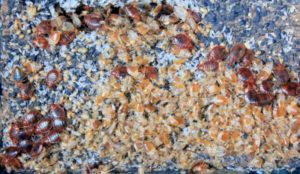Bedbug Heat Treatments in St. Albans – Fast, Safe & Effective Removal

Professional Bedbug Control in St. Albans
If you’re struggling with a bedbug infestation in St. Albans, you’re not alone — and you’re definitely not stuck with them! At Thermal Pest Control, we specialise in bedbug heat treatments that eliminate pests in one visit without the use of harmful chemicals.
We don’t just treat the symptoms — we eliminate the problem.
Need Help Now?
Call us on 0800 955 1018 for a fast response, or click here to request a call back within 10 minutes. We offer discreet, professional service with unmarked vans to protect your privacy.
Why Choose Heat Treatments?
Most pest control methods rely on insecticides that may only kill the bugs you can see. Our bedbug heat treatment penetrates deep into cracks, mattresses, furniture, and wall voids — reaching temperatures of up to 120°F to completely eliminate all stages of bedbugs, including eggs.
Heat leaves no survivors – and no chemical residue.
Our Service Includes:
-
Full home or room-by-room heat treatment
-
Zero toxic insecticides – safe for children and pets
-
Discreet service with unmarked vehicles
-
Fast, same-day appointments
-
Trained, experienced technicians
Don’t Let the Bedbugs Win
Bedbugs are masters of hiding and can go months without feeding, waiting for the perfect time to re-emerge. That’s why traditional sprays often fail — the bugs simply move or hide.
With heat, there’s no place to hide. From furniture joints to wall cavities, our equipment ensures your entire space is brought up to a lethal temperature, killing all bugs and their eggs.
Heat brings peace of mind – because you know the job’s done.

Learn More About Bedbugs
-
Adult bedbugs are reddish-brown, flat, and wingless.
-
They grow up to 5mm in length and feed on human blood.
-
Attracted by body heat and carbon dioxide, they bite and hide.
-
They can survive up to a year without feeding in the right conditions.
-
Bites are often painless at first but can become itchy, inflamed, or infected.
Bedbug FAQs
Q: How do I know if I have bedbugs?
A: Common signs include small blood spots on sheets, dark faecal spots on mattresses, shed skins, and itchy bites — especially around the arms, neck, and shoulders.
Q: Do heat treatments really work?
A: Yes! Our professional-grade heat systems raise room temperatures above 120°F, which is lethal to all bedbug life stages. It’s fast, effective, and chemical-free.
Q: Is it safe for my family and pets?
A: Absolutely. Our heat treatments use no toxic insecticides, making them safe for families, pets, and sensitive environments.
Q: How long does a treatment take?
A: Most treatments are completed in a single day. Larger homes may take longer, but we’ll give you a full timeline and preparation checklist in advance.
Q: Will I need to throw away my mattress or furniture?
A: In most cases, no! Our heat treatment penetrates deep enough to kill bedbugs inside mattresses, bed frames, sofas, and wardrobes — saving you money.

Say Goodbye to Bedbugs – For Good
Don’t waste time with ineffective DIY treatments or sprays that only delay the problem. Trust the experts at Thermal Pest Control for fast, proven results with heat.

